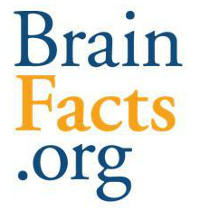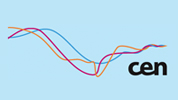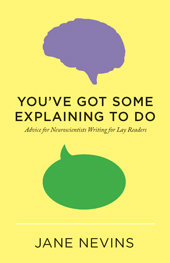BNA Annual General Meeting 2025
1st April 2025
Key amongst the BNA's Charitable Objects are those to share neuroscience and engage with people about neuroscience research, and we encourage and support our members to do so.
The websites below provide good resources for use in public engagement activies. If you have any recommendations we can add to this page and share with other BNA members, please let us know.
 Brainfacts.org
Brainfacts.orgBrainFacts.org is an authoritative source of information about the brain and nervous system for the public. Its purpose is to share what neuroscientists know, explore what they don’t yet know fully, and discuss how today’s research advances understanding.
An initiative of The Kavli Foundation, the Gatsby Charitable Foundation, and the Society for Neuroscience - all leading global nonprofit organisations working to advance brain research - the brainfacts.org editorial board is made up of leading neuroscientists from around the world, all the site’s content is reviewed by scientists for accuracy, and information is regularly checked and updated.
BrainFacts.org provides information about the field’s understanding of causes, symptoms, and outcomes of brain disorders. It is not intended to give specific medical or other advice to patients. Visitors interested in medical advice should consult with a physician.
 The DANA Foundation
The DANA Foundation Your gateway to responsible information about the brain. The Dana Foundation is a private philanthropic organisation that supports brain research through grants, publications, and educational programs.
An extensive site full of useful information about the brain, including news stories and free publications.
This is also a good place to find out about Brain Awareness Week, a "global campaign to increase public awareness of the progress and benefits of brain research", which was launched by the Dana Alliance for Brain Initiatives in 1996.
 Neuro-hit or neuro-myth
Neuro-hit or neuro-mythAn excellent site on 'Neuromyths' from the Centre for Educational Neuroscience, Birkbeck University of London.
Researchers in educational neuroscience have begun to compile sets of resources, meta-analyses and reviews to address which neuroscience-inspired teaching techniques are supported by empirical evidence, and which ‘facts’ about the brain actually reflect current consensus within neuroscience.
In these pages you can access some of these resources, themed around some of the main topics where neuromyths have arisen, and give brief overviews about the existing state of research – what we know and don’t yet know on these topics.
 Neuroscience for kids
Neuroscience for kidsNeuroscience for Kids is maintained by a neuroscientist, Eric Chudler, and "has been created for all students and teachers who would like to learn about the nervous system."
"Discover the exciting world of the brain, spinal cord, neurons and the senses. Use the experiments, activities and games to help you learn about the nervous system. There are plenty of links to other web sites for you to explore.”
This is a particularly useful site for neuroscience-related public engagement activities, questions and answers about the brain, and even runs a poetry contest.
 Frontiers for Young Minds
Frontiers for Young MindsFrontiers for Young Minds provides a collection of freely available scientific articles by distinguished scientists that are shaped for younger audiences by the input of their own young peers.
A non-profit journal, scientists are invited to write about their research for a younger audience and the articles are reviewed by Young Reviewers age 8-15 with support from Science Mentors.
One of the four sections of this journal is dedicated to neuroscience and contains many excellent articles about “Core Concepts" and “New Discoveries" in neuroscience, all written in a clear and accessible manner, and well-illustrated with cartoons, diagrams and images.
 You've Got Some Explaining to Do: Advice for Neuroscientists Writing for Lay Readers
You've Got Some Explaining to Do: Advice for Neuroscientists Writing for Lay ReadersPaul Matthews, Imperial College London, said, “Jane Nevins captures and conveys the true meaning of communicating through writing...This book is a must read for every aspiring young scientist and scholar.”
The book is divided into three parts: The Meet-up, Simple Fixes, and Science and Style. In the Meet-up, Nevins describes the different venues for lay writing, from opinion pages to popular magazines, and what readers of each expect and respond to best. In Simple Fixes she shows how jargon, ‘cross-over words,’ and hackneyed expressions can be remedied, clearing away confusion for readers. In Science and Style she discusses what to put first, how to quote and paraphrase in lay copy, and what to leave out.
Jane Nevins served as editor in chief of the Dana Press from its inception in 1998 until 2010. She has more than 20 years of experience in translating neuroscience.
For more resources for outreach, please click here.